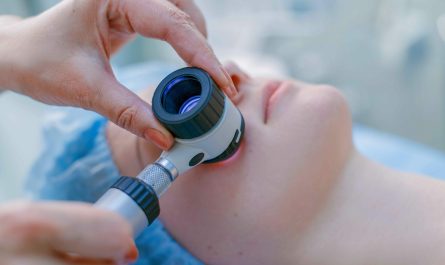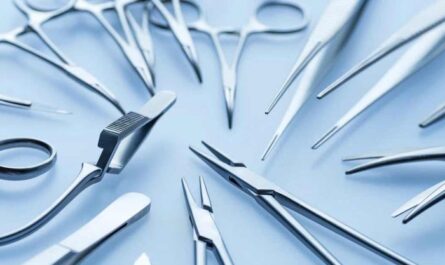
Types of PHV
There are three main types of prosthetic heart valves that can replace a diseased natural heart valve: mechanical heart valves, bioprosthetic (tissue) heart valves, and homograft valves.
Mechanical Heart Valves
Mechanical heart valves are made entirely from manufactured materials like carbon or other durable plastics. The two most common types are ball-and-cage valves and tilting disc valves. Mechanical valves last a very long time, often lasting the entire lifetime of the patient. However, mechanical valves require life-long blood thinning medication as they are more prone to blood clots forming on them compared to tissue valves. Patients with mechanical valves need regular monitoring of their international normalized ratio (INR) levels.
Bioprosthetic (Tissue) Heart Valves
Bioprosthetic or tissue heart valves are manufactured by taking harvested tissue from pigs or cows and preserving it. The two main types are stented tissue valves, where the preserved tissue is placed inside a stent to give it shape and structure, and stentless tissue valves which do not have a stent. Tissue valves have the advantage of not requiring blood thinners. However, tissue valves are prone to calcification and wear out quicker than mechanical valves, often lasting 10-15 years before needing replacement.
Homograft Valves
Homograft valves are harvested from human cadaver donors. They have excellent biocompatibility and durability compared to artificial valves. However, homograft valves have limited availability due to shortage of donors. They also have a higher risk of immune rejection compared to artificial valves. Homograft valves may last 20 years or longer before needing replacement.
Reasons for Replacing a Heart Valve
There are several medical conditions where one or more of the heart valves may need to be replaced:
– Stenosis – A narrowing of the valve opening which obstructs blood flow. This is usually caused by calcium buildup on the valve over time.
– Regurgitation – Damage to the valve leaflets causes them to not close properly, allowing blood to leak backwards. Conditions like rheumatic fever can cause regurgitation.
– Congenital heart defects – Some people are born with abnormal heart valves like bicuspid aortic valve disease.
– Infective endocarditis – A bacterial infection of the inner layers of the heart that often affects the valves.
– Heart valve damage from conditions like Marfan syndrome.
The Surgical Procedure for Heart Valve Replacement
A heart valve replacement surgery involves the following basic steps:
– General anesthesia is used to put the patient into a deep sleep.
– The surgeon makes an incision down the center of the chest (sternotomy) to access the heart.
– The patient is connected to a heart-lung bypass machine that circulates and oxygenates their blood outside the body.
– The damaged heart valve is cut away from the surrounding tissue.
– The replacement valve is sewn into the valve’s annulus using fine sutures.
– The bypass is stopped and the new prosthetic valve is tested for function.
– Chest is closed with wiring or sutures after any bleeding is controlled.
The patient is monitored closely in the intensive care unit after surgery. Recovery in the hospital is typically 1-2 weeks depending on overall health.
Follow Up Care Post Heart Valve Replacement
After being discharged from the hospital, patients need to follow up regularly with their cardiologist for monitoring:
– Checking prosthetic valve function with echocardiograms every 6-12 months.
– Monitoring for any potential complications like blood clots, bleeding or infection.
– Adjusting blood thinner dosing for those with mechanical valves to keep INR in the therapeutic range.
– Following a healthy lifestyle with a low-sodium diet to reduce stress on the heart.
– Contacting the doctor immediately if any symptoms occur like chest pain, palpitations or difficulty breathing.
Most people who have a prosthetic heart valve replacement can return to regular activities within 4-6 weeks. Lifelong follow up is important to ensure the new valve is functioning optimally. With advances in surgical techniques and valve technology, prosthetic valves provide effective treatment for defective heart valves.
Complications of PHV
While prosthetic heart valves significantly improve quality of life, there are still some risks involved:
Thromboembolism
Mechanical valves have surfaces that blood can potentially stick to and Form dangerous clots. This puts patients at continuous risk of thromboembolism like strokes. Maintaining proper anticoagulation levels reduces this risk.
Bleeding
The blood thinners given to reduce clot risk carry their own risk of bleeding complications. Bleeding from the gastrointestinal tract or other sites can potentially be life-threatening.
Endocarditis
All prosthetic valves have some risk of bacterial infection or endocarditis. Following antibiotic prophylaxis guidelines before at-risk medical procedures helps prevent this.
Structural Valve Deterioration
While mechanical valves last decades, bioprosthetic tissue valves may start leaking or narrowing again after 10-15 years from calcification. This often requires reoperation.
Nonstructural Dysfunction
Rarely, a mechanical valve may malfunction from issues like pannus ingrowth or suture line disruption. Early detection of changes is important.
In Summary, PHVs are instrumental in the treatment of heart valve disease, a condition characterized by abnormalities or damage to the heart’s valves. These artificial devices serve as critical replacements for diseased or dysfunctional heart valves, restoring proper blood flow and cardiac function. With advancements in medical technology, PHVs offer improved durability, longevity, and compatibility with the patient’s anatomy, enhancing their efficacy and safety. Understanding the importance of PHVs is essential for healthcare professionals involved in the diagnosis and management of heart valve disorders, as it enables them to provide optimal treatment options and improve patient outcomes.



